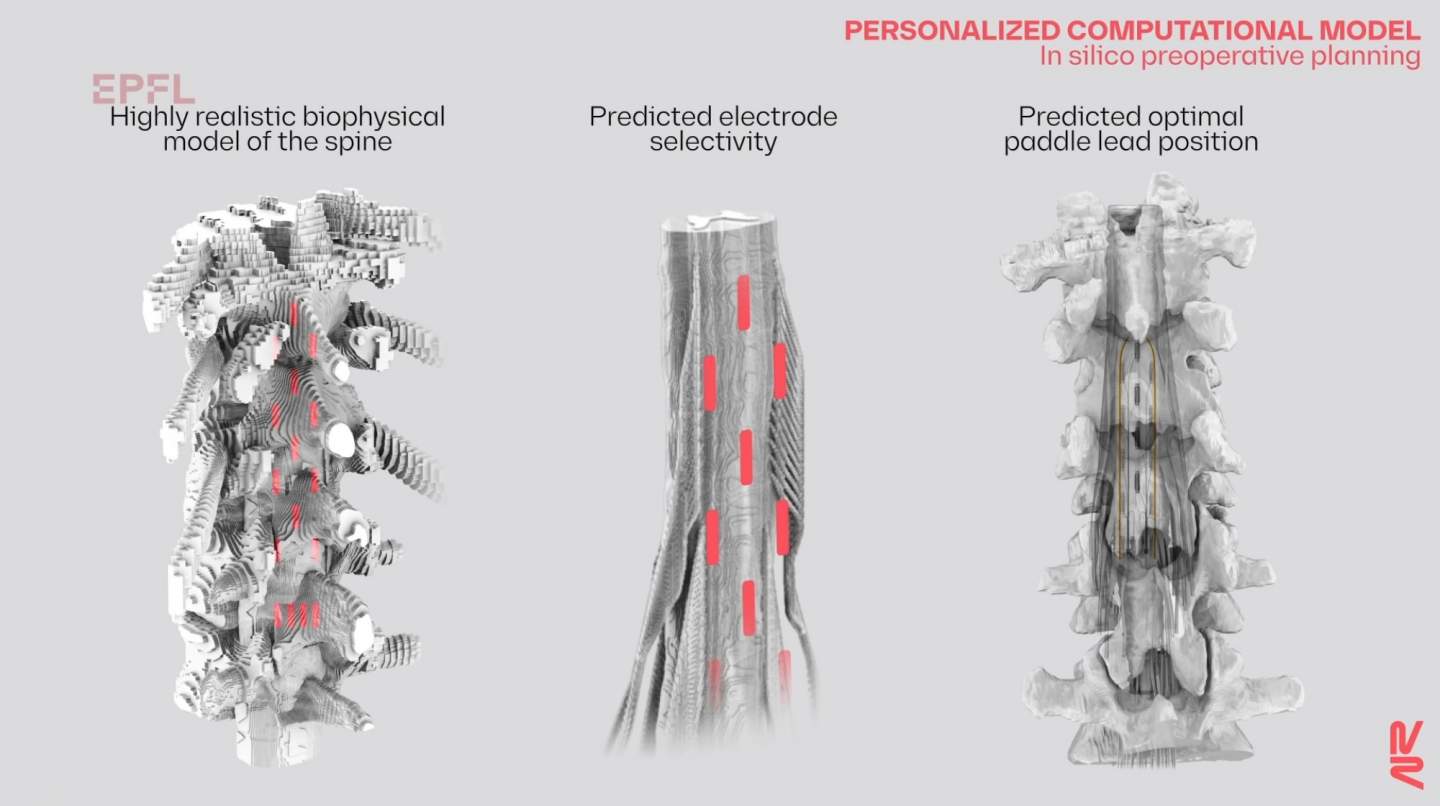The Tech Helping Paralyzed People Walk Again
In science fiction and superhero movies, getting people with spinal cord injuries to walk again is as easy as dreaming up some kind of wild technology that overcomes their disability. It isn't quite that easy in the real world, but researchers have revealed a new implant system that gets us one step closer to restoring the ability to walk in paralyzed patients with complete spinal cord injuries. While there's still plenty of research to be done, the results that have been shared so far seem promising.
The implant system was developed by a research team led by Grégoire Courtine, a professor at the Swiss Federal Institute of Technology Lausanne/École polytechnique fédérale de Lausanne (EPFL) and Jocelyne Bloch, a professor and neurosurgeon at Lusanne University Hospital/Centre hospitalier universitaire vaudois (CHUV). It received its first proof-of-concept in 2018 when it helped David Mzee walk with the assistance of a walker after suffering a partial spinal cord injury.
As detailed by the NueroRestore research center, which is run by Courtine and Bloch, the intervening four years since that proof-of-concept have seen some big advancements. These days, their implant system "can stimulate the region of the spinal cord that activates the trunk and leg muscles" using artificial intelligence. The implants have also been studied in three people who have suffered complete spinal cord injuries – not just partial ones, as Mzee experienced before his testing in 2018 – and allowed them to walk again.
That's big enough on its own, but what's even more impressive is the reported speed at which patients can start moving again after their implants are activated. Courtine said that "all three patients were able to stand, walk, pedal, swim, and control their torso movements in just one day" once their implants were activated, which is certainly encouraging.
That's not to say that the road to recovery has been easy for these participants. Speaking to Science Alert, Courtine clarified the matter, saying, "It's not that it's a miracle right away, not by far." As noted on NeuroRestore, the patients in these studies still needed "extensive training" before they were comfortable using the implants, but when they were switched on, it sounds like the results came in at a decent pace.
 EPFL
EPFL
Michel Roccati was one of the three patients who participated in this study, and the only one that has been named. Courtine told Science Alert that about four months after his implants were activated, Roccati was able to walk while only using a frame for balance, and that now he's "able to stand for two hours – he walks almost one kilometer without stopping." Indeed, in that profile of the technology NeuroRestore, Roccati said that his goal is to walk one kilometer, so it sounds like he's closing in on that milestone.
Potentially, this technology could be even more impressive than the stuff we see in the movies. For instance, in the Marvel Cinematic Universe, Tony Stark (Iron Man) makes a pair of robotic leg braces for Colonel James Rhodes (War Machine) after he's paralyzed during the events of "Captain America: Civil War." However, while those leg braces more or less allow Rhodes to walk, move, and fight as he did before his injury, his restored motor skills are also tied to them – meaning that if he isn't wearing them, his paralysis returns.
With the technology that Courtine and Bloch have developed with their team of researchers, there isn't necessarily an "off" and "on" like there would be with a pair of leg braces. The implant measures six centimeters in length and with leads that are placed "underneath the vertebrae, directly on the spinal cord." The electrodes in that implant can be fired by the patient themselves using physical controls. The controls send those inputs to a pacemaker in the patient's abdomen, which then send those commands to the implant on the patient's spinal cord.
 EPFL
EPFL
While Bloch and Courtine both say that these implants are a long way away from wide availability, these clinical studies seem to show a lot of promise. In the short term, the goal is to miniaturize the implant and create smartphone controls for it. We'll also see some massively expanded studies in the United States and Europe that could total as many as 100 participants.
It'll be years before these implants are offered as mainstream solutions for spinal cord injuries that result in paralysis, if they ever are at all. For now, however, Bloch and Courtine have shared some encouraging results, and you can read about them in the paper "Activity-dependent spinal cord neuromodulation rapidly restores trunk and leg motor functions after complete paralysis" in the journal Nature Medicine.
